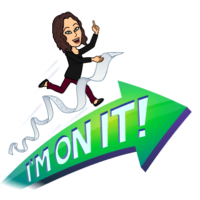
It seems there are never enough hours in the day to support those we serve. Instructional coaches are stretched thin, oftentimes serving multiple teachers, sometimes across various school sites. I myself have this challenge. As I have continued to refine my practice as a coach to meet the needs of my learners, I have discovered some methods for sustaining support in between my visits with them.
Be Available in Many Virtual Spaces
No two educators are exactly alike. Each has varying strengths, needs, and preferences. As coaches, are job is to serve, to come alongside our people to foster a collaborative spirit of inquiry to prompt continual refinement. As such, it is ideal that we be available for each of these individuals even when we are not physically present with them. What we must realize is that those we serve do not all inhabit the same virtual communication spaces. I have learned to be available on a myriad of platforms. Educators will contact me with clarification questions in a variety of ways, including email, direct message on Twitter or Facebook, text message on my cell phone, voxer (a walkie talkie app), or Google hangouts. I have learned the communication patterns of some of these teachers.
You may wonder if managing multiple platforms is a greater challenge, if it increases my workload. Quite the contrary. For me, it is easier to manage than a single platform. I currently have more than 34,000 emails in my inbox which have accumulated over the past 3 and a half years, which I calculated to be approximately 26 per day if you include weekends. As an administrator, I believe the daily rate was likely triple this daily amount. Interestingly, when I began to provide teachers with various ways to contact me, they were more likely to reach out for support but I felt less stressed. Educators appreciated that they could contact me on the platform on which they are most comfortable, and I discovered that one or two notifications spread across multiple platforms felt less daunting than more emails in my inbox.
Curate Resources, Based on Teacher Requests
As I made it easier for educators to contact me for support outside our official coaching days, I began to discover that many were asking similar questions I sent links to the same video tutorials and resources again and again, to different teachers as they needed them. This helped me to determine the effectiveness and trends in the implementation of my coaching. The content of the questions and request for additional support reveal what is resonating with educators. While this is valuable information, I felt that there may be a better way to curate these resources I provided on a consistent basis. The more simple it is for a teacher to get a prompt reply to their need for support, the more likely they are to implement learnings from coaching. As such, I added a resource bank to my website, complete with categories for simple navigation. I continue to seek feedback from teachers regarding ways I can make the website more valuable for them. This allows me to multiply my support and increase my efficiency.

Don’t Be Afraid to be on Video!
I was in a classroom modeling a lesson one day when the teacher asked if I would mind if she recorded the learning experience on her phone. I will admit this felt a bit uncomfortable. But I obliged. The teacher was grateful and felt much more comfortable implementing the strategies she witnessed when I left. This was a great success. If our coaching is a one time event, if there is no action when we have left the building, we are not impactful. It is vital that we discover ways to bridge the gap between learning and application. Video is a powerful way to support teachers. I now make it a practice to suggest this practice to the teachers with whom I work. “Some teachers videotape the lesson so they can remember what it looks like when I am no longer here. If you’d like to do so, that is fine with me.” I love that the initial request came from a teacher herself, and that it has expanded to be a normal practice that supports others.
Know and Listen to Those You Serve
As an educational coach, it can be difficult to juggle relationships with multiple individuals with varying preferences. I have found that the best way to support those we serve is to offer consistent support, meet each teacher in the physical and virtual spaces they inhabit, curate resources to match their needs, and be open to their ideas as to the best way you can support them.

Very sound advice- I particularly liked that you stepped outside your own comfort zone to let the teacher video your lesson. It’s so well said- if nothing changes after we leave the building, there’s been no impact— that alone can frustrate the most dedicated coach. Kudos to you!
Thank you for taking the time to comment. You are appreciated!
Always appreciate the honesty and ‘real Classroom’ experiences and conversations as these have guided me often. In my new role this year as ‘Teaching & Learning /Digital Coach’ I’m blessed to have colleagues online (like yourself) who have lit the way! Thank you.
Thank you for the comment. Enjoy your new role!
Hi, I also think follow up is key! A quick drop by or a call or text or email. This year is my 17th year of teaching teachers full-time and I love what I do! Finding time has been the hardest thing for teachers.
Also, 15 minute visits can sometimes keep teachers motivated to keep trying new edtech tools or lessons.
Excellent points! Thank you for taking the time to share.